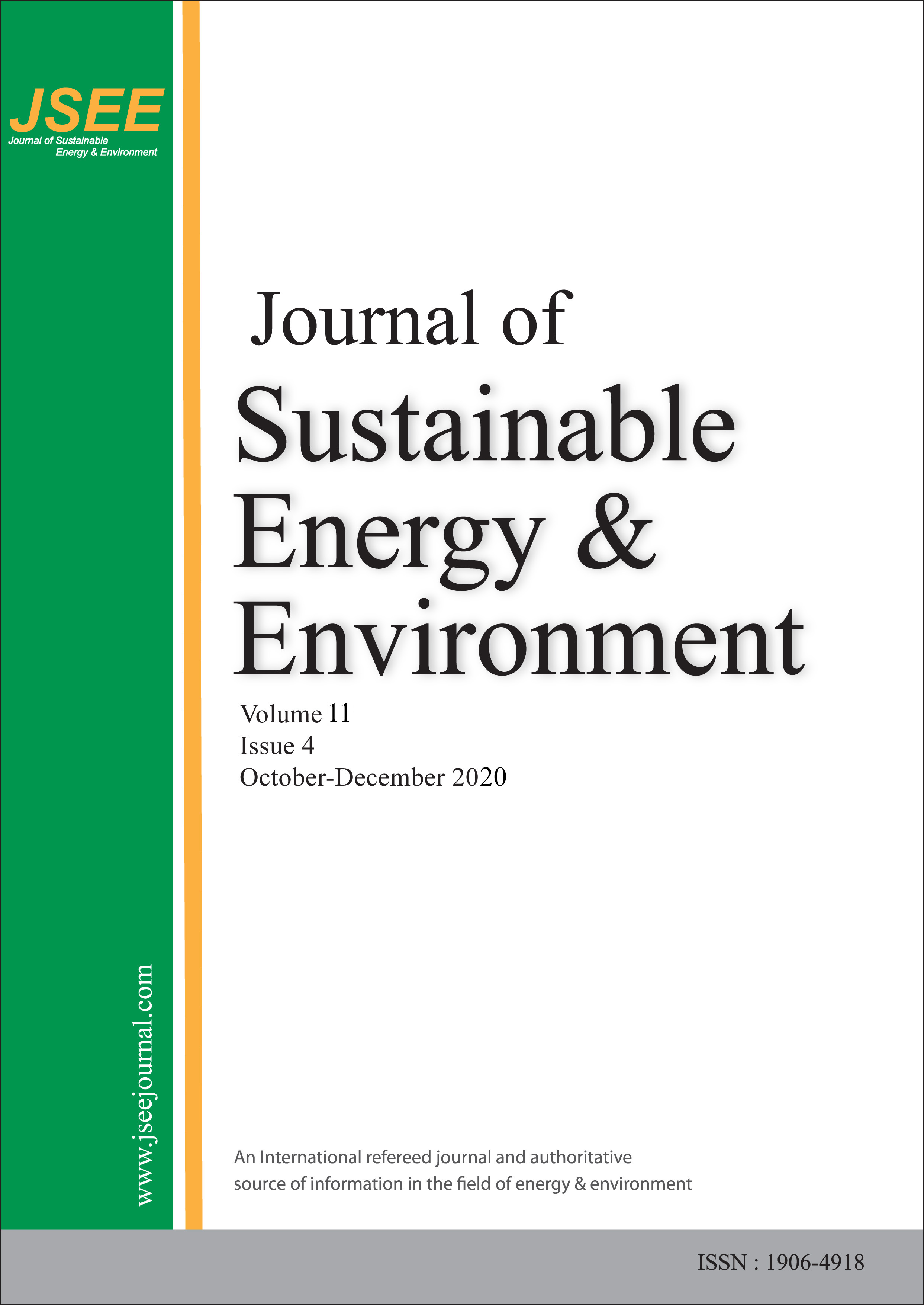
Abass A. Gazal and Shabbir H. Gheewala*
Abstract: Plastics are synthesized polymer compounds mostly made from petrochemical raw materials and characterised by high molecular mass and plasticity. They have many applications and find widespread use due to their cheapness and versatility. In this study, global plastics production and the accumulation of plastic waste was documented. This waste has huge adverse impacts on oceans and other ecosystems which has led to increasing scientific and public concern. It is also worthy to mention that plastic and polymer waste are not useless as they can be recycled into new products. This article with a systematic review of the literature aims to present the threats and the weight of evidence for plastics, microplastics pollution causing environmental harm, along with a review of the life cycle assessment (LCA) studies which have been carried out on bioplastics and petroleum-based plastics to help compare/contrast and shed more light on the phases contributing the most environmental burdens. The LCA studies found the bioplastics to pose more environmental burdens in the production phase due to the use of chemicals, the weight of the bioplastics, and also the electricity usage for cleaning, but are more sustainable in the long-term. To curb the adverse and detrimental effects and to make plastics more environmental friendly, producers must adopt the green chemistry techniques to find alternatives to additives responsible for health hazards. Also, a comprehensive plan should be adopted for zero tolerance against plastics/polymer waste and people’s participation is a must to achieve the full success.
Keywords: Plastics, microplastics, Hazardous substance, Environment and Life cycle assessment.

Shoun Leit Nandar, Sebastien Bonnet*, Savitri Garivait and Pham T. B. Thao
Abstract: This study was conducted to assess the health benefits from PM2.5 reductions in Yangon, the most populous city of Myanmar, during 2019 by using the Environmental Benefits Mapping and Analysis Program-Community Edition model (BenMAP-CE). An associated economic valuation of the health impacts was also performed. The causes of death classified in this study were all-cause (non-accidental), ischemic heart disease and lung cancer. The results of this study showed that daily PM2.5 concentrations exceeded the WHO guideline throughout the year, most particularly during the hot and cool seasons. Also, it was found that the use of concentration response coefficients (beta values) from BenMAP-CE that are characteristics of a U.S. population lead to an overestimation of the number of deaths, i.e. all-cause (non-accidental) mortality, ischemic heart disease and lung cancer, compared to values reported in the literature for Thailand. This translated in an overestimation of corresponding costs, which in any case, remained below 1% of the country’s GDP as observed in neighboring countries such as China. From a public health perspective, the findings of these investigations suggest that Myanmar should first establish a less stringent National Ambient Air Quality Standard prior to moving toward achieving the WHO guideline. Overall, the findings of this research highlight the importance of addressing the potential risk that PM2.5 poses on public health and the economy of the country at large.
Keywords: PM2.5, health benefits, Yangon, BenMAP-CE.

Tippapon Tocuweang, Darunee Aussawasathien and Nakorn Worasuwannarak*
Abstract: Biomass waste was a renewable resource, and its effective utilization was of prime importance, particularly in Thailand, where massive amounts of biomass wastes were generated. Recently, the authors had presented a degradative solvent extraction method that converts biomass waste into high-quality extract at 350℃ using petroleum-based solvents. The extracts, called solubles. In this study, the possibility of carbon fiber from soluble to produced supercapacitor had been examined. The solubles were heated in nitrogen atmosphere at 280-320℃ to increase the softening point. Then, they were spun into fiber using a mono-hole spinning machine, and then they were stabilized in air at 300℃ and were carbonized at 900-1,400℃ in nitrogen atmosphere. The carbon fibers had hollow and the specific surface area was around 326 m2/g. The electrical conductivity of carbonized fiber at 900℃ was 32.02 S/cm at electric current of 800 µA. The specific capacitance of the carbonized fiber at 900℃ was 46.79 F/g using KCl as electrolyte. These results showed a good potential for producing supercapacitor from soluble produced from rice straw.
Keywords: Carbon fiber, biomass, supercapacitor.

Orumgbe Chukwuekum and Okuma Silas Oseme*
Abstract: It is well known that natural dust accumulation on photovoltaic (PV) panels from outdoor environment mostly in northern part of Nigeria can obscure the solar radiation from reaching the solar photovoltaic panel, therefore decreases the power output and the efficiency of the panel. This study is based on the effects of dust particles accumulation on the performance of solar photovoltaic panels and also to remove dust particles accumulation on the surface of PV panel using mitigation method that require minimum amount of energy and less use of water.
The research was conducted to determine the influence of dust particle accumulation on solar panel with constant light source deliver by halogen lamp, to establish the output power generated and the efficiency. It was concluded from the study results that dust accumulation on the surface of PV panel can reduce solar panel system efficiency by up to 30-50%. It was notice that the output power of the solar panel after cleaning with pressurized water and soap is 2.31 W, water and surfactant is 2.295 W, while the output power for solar panel surface coated with thin glass nano-structure is 2.43 W. The results clearly show that Coating the surface of PV panel with conducting material is the best method to mitigate dust accumulation. This method has good advantages since water is not require, which is rare and quite expensive in northern part of Nigeria.
Keywords: Solar energy, dust deposit, surface, photovoltaic panel, coating.